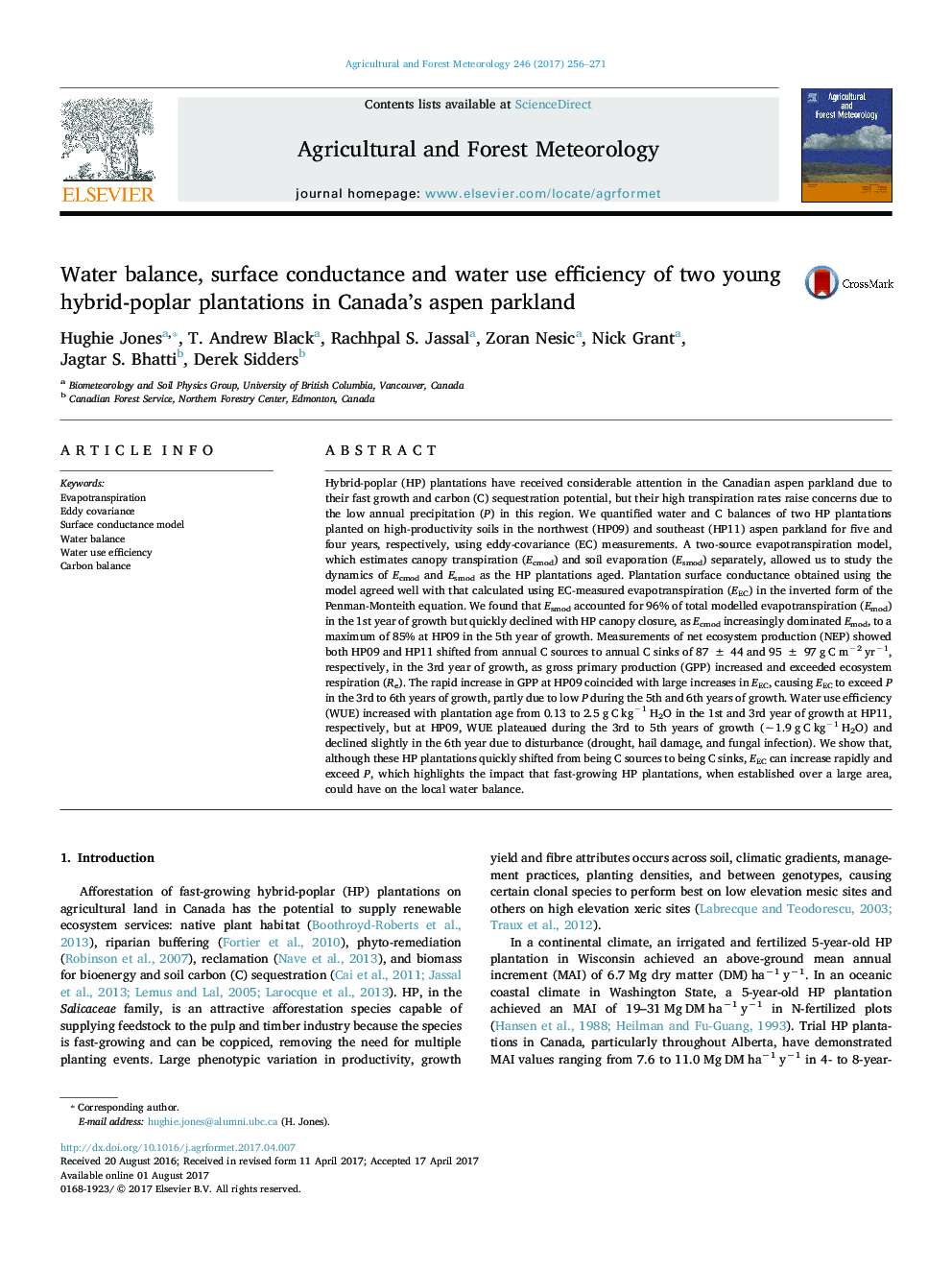| کد مقاله | کد نشریه | سال انتشار | مقاله انگلیسی | نسخه تمام متن |
|---|---|---|---|---|
| 6457727 | 1420855 | 2017 | 16 صفحه PDF | دانلود رایگان |
- Hybrid poplar on productive soil became a carbon sink in the 3rd year of growth.
- Annual evapotranspiration exceeded precipitation by the 3rd year of growth.
- Measured and modelled surface conductance values agreed well.
- Water use efficiency increased with age and reached a value of 2.50 g C kgâ1 H2O.
Hybrid-poplar (HP) plantations have received considerable attention in the Canadian aspen parkland due to their fast growth and carbon (C) sequestration potential, but their high transpiration rates raise concerns due to the low annual precipitation (P) in this region. We quantified water and C balances of two HP plantations planted on high-productivity soils in the northwest (HP09) and southeast (HP11) aspen parkland for five and four years, respectively, using eddy-covariance (EC) measurements. A two-source evapotranspiration model, which estimates canopy transpiration (Ecmod) and soil evaporation (Esmod) separately, allowed us to study the dynamics of Ecmod and Esmod as the HP plantations aged. Plantation surface conductance obtained using the model agreed well with that calculated using EC-measured evapotranspiration (EEC) in the inverted form of the Penman-Monteith equation. We found that Esmod accounted for 96% of total modelled evapotranspiration (Emod) in the 1st year of growth but quickly declined with HP canopy closure, as Ecmod increasingly dominated Emod, to a maximum of 85% at HP09 in the 5th year of growth. Measurements of net ecosystem production (NEP) showed both HP09 and HP11 shifted from annual C sources to annual C sinks of 87 ± 44 and 95 ± 97 g C mâ2 yrâ1, respectively, in the 3rd year of growth, as gross primary production (GPP) increased and exceeded ecosystem respiration (Re). The rapid increase in GPP at HP09 coincided with large increases in EEC, causing EEC to exceed P in the 3rd to 6th years of growth, partly due to low P during the 5th and 6th years of growth. Water use efficiency (WUE) increased with plantation age from 0.13 to 2.5 g C kgâ1 H2O in the 1st and 3rd year of growth at HP11, respectively, but at HP09, WUE plateaued during the 3rd to 5th years of growth (â¼1.9 g C kgâ1 H2O) and declined slightly in the 6th year due to disturbance (drought, hail damage, and fungal infection). We show that, although these HP plantations quickly shifted from being C sources to being C sinks, EEC can increase rapidly and exceed P, which highlights the impact that fast-growing HP plantations, when established over a large area, could have on the local water balance.
Journal: Agricultural and Forest Meteorology - Volume 246, 15 November 2017, Pages 256-271
